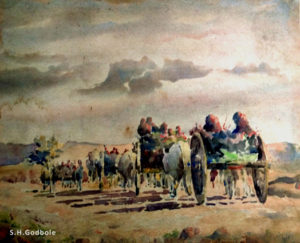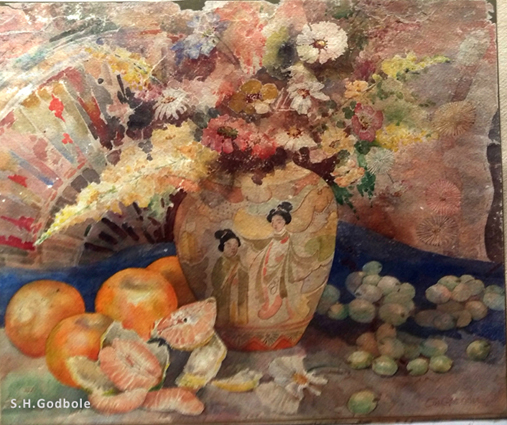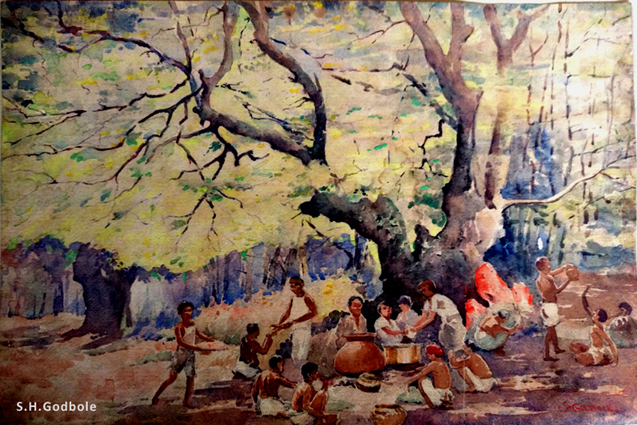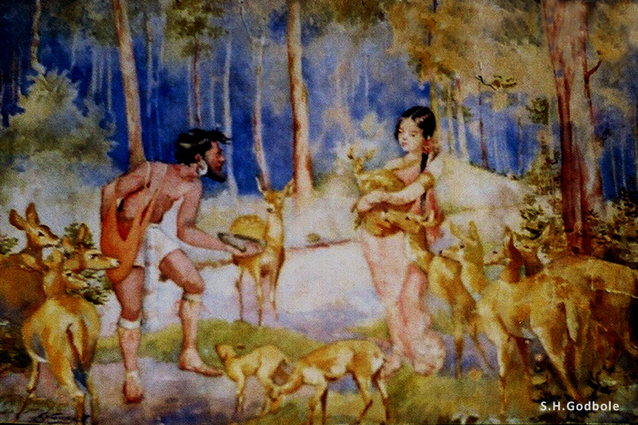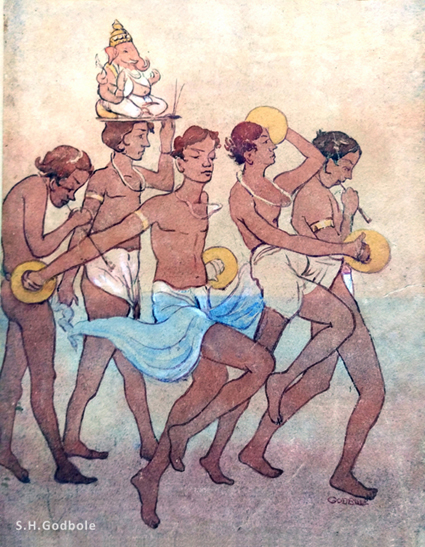“Bullock Cart Caravan returning home at sundown”, by S.H.Godbole, watercolor, Pune, 1948
Godbole made this painting when he was residing at his idyllic farm house on Bombay Road outside Pune. Bullock carts was a favorite theme in many of his paintings in the 1940s. Even though this painting may be seen as one of his many bullock cart renderings, it was a favorite with rasiks, because of its sentimental depiction of the lengthening shadows heralding the end of the day. One sees the dark clouds gathering in the upper right corner. The caravan better reach home before the rains come or the sun sets whichever comes first. Godbole had developed a hands-on approach that was suitable for each individual painting. The treatment here is impressionistic. Through blobs of the brush an impression is created of many bullock carts and many people traveling. The shadows are depicted with minimal effort but maximum impact. The dark clouds forming in the midst of a sky that is getting pink and purple must be creating a memorable déjà-vu experience for the villagers returning home. Many of us who have ever experienced such a timeless mystical moment of rural India get a similar déjà-vu experience from this painting. The artist has succeeded in capturing that very feeling, which would be hard to describe even in thousands of words.
Many have marveled at the transparent feeling that Godbole creates in his watercolor paintings, be they portraits or landscapes. Artist Mumbiram has shared the secret behind this treatment of watercolours. Highlights and bright areas are created by leaving the paper white or let it shine through, rather than by adding white pigment to the colours. The artist has to have a good judgment of the light effects before dipping the brush in the colours.
The maverick Indian movie-maker K.Narayan Kale had hung this painting on top of his bed in his house in Pune for many years in the fifties and sixties. Those who have studied art scene in Maharashtra in the 1930s know that K.Narayan Kale was an important name in art criticism of those times and the editor of the influential “Ratnakar” magazine.
